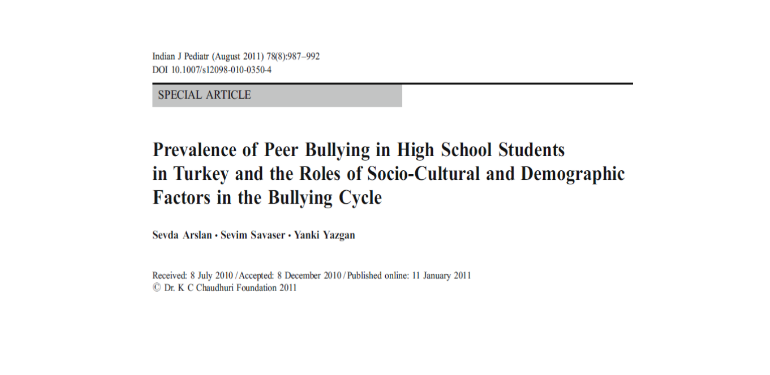Abstract
This research was conducted as a descriptive and relational study to determine the frequency of bullying among high school students and the relationships between some of their characteristics and their roles in the bullying cycle. The research data were obtained from 1670 students in the 9th and 10th grades of six high schools in Istanbul province. The data were analyzed with percentage distribution, Chi square, t test, correlation and Tukey test.The Determination of Peer Bullying Scale and a Personal Information Form were used for data collection in the research. According to the Determination of Peer Bullying Scale 17% of the students were in a bullying cycle (5.3% as bully, 5.9% as victim, and 5.8% as both bully and victim). The boys used more direct methods of bullying and girls more indirect methods of bullying. The rate of bullying behavior was also higher in boys and being a victim was higher in girls; the majority of the girls were bullied by girls and the majority of the boys were bullied by boys. More of those involved in bullying incidents had unexcused absenteeism from school and stated that they did not like school. The results obtained from this research show that the prevalence of bullying in high schools in Turkey is similar to the results in other countries. Determination of the causative factors that support and maintain bullying behavior for implementation of prevention programs is required.
Keywords: High school, Bullying, Victim, Health professional



